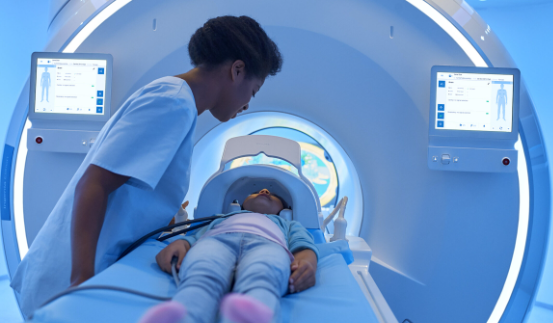In the realm of modern medicine, a radiologist stand as the unsung heroes, diligently deciphering medical mysteries hidden within the shadows. With unwavering dedication and expertise, these healthcare professionals play a pivotal role in the diagnosis and treatment of various ailments. From X-rays to MRIs, radiologists harness cutting-edge technology to uncover the secrets hidden beneath the surface. This article delves into the world of radiology, shedding light on the invaluable contributions of these medical detectives.
The Path to Radiology
Becoming a radiologist is no simple feat. To embark on this journey, one must first obtain a bachelor’s degree, typically in a field like biology or chemistry. Subsequently, aspiring radiologists enter medical school, where they spend four grueling years honing their medical knowledge. After completing medical school, they enter a residency program, specializing in radiology, which can span anywhere from four to six years. This rigorous training equips them with the skills necessary to navigate the intricate world of medical imaging.
The Art of Interpretation
Radiologists are the master interpreters of medical images, turning seemingly abstract visuals into actionable insights. Whether it’s deciphering an X-ray of fractured bones or scrutinizing an MRI of the brain, they are the medical detectives who connect the dots. They meticulously analyze images, searching for anomalies, irregularities, or hidden conditions that may elude other healthcare professionals.
Furthermore, radiologists collaborate closely with referring physicians, ensuring that their interpretations guide appropriate treatment plans. This synergy between radiologists and other specialists is paramount in providing patients with the best possible care.
Technology at Their Fingertips
A Radiologist is at the forefront of technological advancement in the medical field. They harness a vast array of imaging modalities, including X-rays, CT scans, ultrasounds, and MRIs, each offering a unique perspective on the human body. The evolution of these technologies has revolutionized medical diagnostics, enabling earlier detection of diseases and more precise treatment planning.
For instance, CT scans, which provide cross-sectional images of the body, have become invaluable in diagnosing conditions ranging from cancer to vascular diseases. Radiologists use these scans to pinpoint abnormalities with unparalleled precision. Likewise, MRI technology offers a non-invasive glimpse into the soft tissues and organs, aiding in the diagnosis of neurological disorders and musculoskeletal injuries.
A Symphony of Expertise
Radiology is not a one-size-fits-all discipline. It encompasses various subspecialties, each demanding a distinct set of skills and knowledge. Interventional radiologists, for example, are akin to medical artists, using imaging guidance to perform minimally invasive procedures, such as biopsies and angioplasties. On the other hand, musculoskeletal radiologists focus on interpreting images of bones and joints, excelling in diagnosing fractures, arthritis, and sports-related injuries.
This diversity of subspecialties ensures that radiologists can cater to a wide spectrum of medical needs. They work collaboratively, sharing their expertise to provide patients with comprehensive care.
Beyond the Dark Room
Contrary to popular belief, radiologists do not spend their entire careers locked away in dark rooms, scrutinizing images on screens. They are active members of healthcare teams, consulting with other physicians and contributing to patient care decisions. Radiologists often provide guidance on the most appropriate imaging techniques, ensuring that patients receive the least invasive yet most informative procedures.
Moreover, their role extends to teaching and research. Radiologists are educators, passing on their knowledge to the next generation of medical professionals. They also engage in groundbreaking research, advancing the field of radiology and improving diagnostic capabilities.
A Vital Cog in the Healthcare Wheel
In the grand scheme of healthcare, radiologists are a vital cog in the wheel of patient care. Their expertise bridges the gap between clinical examination and a definitive diagnosis. By providing precise images and insightful interpretations, radiologists empower physicians to make informed decisions regarding treatment and intervention.
In emergency medicine, radiologists are often the unsung heroes. When time is of the essence, their swift analysis of images can be a matter of life and death. From identifying internal bleeding to detecting signs of stroke, their work in the emergency room is unparalleled.
Conclusion
Radiologist, the silent pillars of modern medicine, tirelessly work behind the scenes, unraveling the complexities of the human body through the lens of technology. Their years of training, dedication, and commitment to staying at the forefront of medical imaging technology make them indispensable in the diagnosis and treatment of a wide range of medical conditions. As we celebrate the advances in healthcare, let us not forget to applaud the radiologists who illuminate the path to healing, one image at a time. Play online casino games today, and enjoy their huge bonuses.










